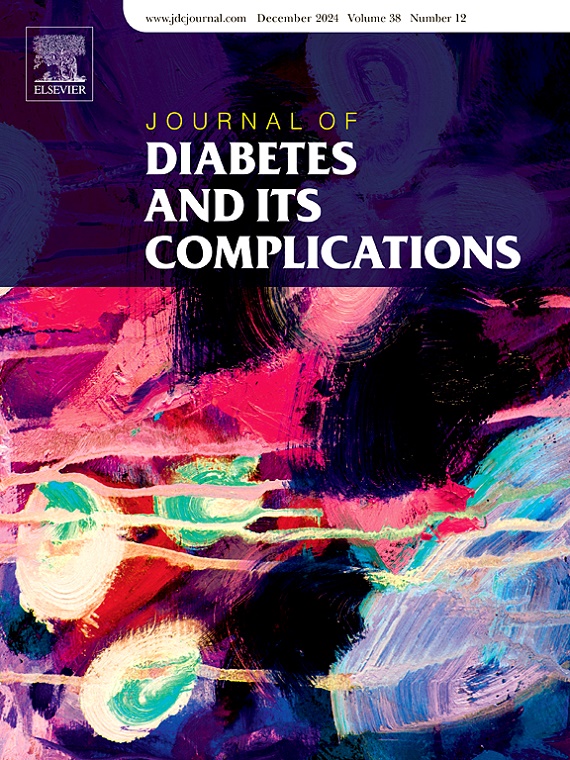SGLT-2 inhibitors on cardiac autonomic function in individuals with and without type 2 diabetes mellitus
IF 2.9
3区 医学
Q3 ENDOCRINOLOGY & METABOLISM
引用次数: 0
Abstract
Sodium-glucose cotransporter-2 (SGLT-2) inhibitors have emerged as key therapeutic agents in managing type 2 diabetes mellitus (T2DM) and obesity, offering benefits that extend beyond glycemic control. This review examines the role of SGLT-2 inhibitors in modulating cardiac autonomic function, with a particular focus on heart rate variability (HRV) as a biomarker of autonomic balance. These agents improve metabolic profiles through enhanced glucosuria, natriuresis, and weight loss, while concurrently reducing blood pressure. Importantly, they also attenuate sympathetic nervous system overactivity and promote parasympathetic modulation, which may lower the risk of adverse cardiovascular events.
The underlying mechanisms include not only the metabolic effects but also anti-inflammatory and antioxidative actions, which together contribute to improved endothelial function and vascular health. Advanced HRV analyses, encompassing traditional time and frequency domain methods as well as nonlinear approaches, have proven valuable in detecting early autonomic dysfunction in high-risk populations. Some studies suggest that SGLT-2 inhibitors may be associated with improvements in HRV parameters, such as increased SDNN and RMSSD and a reduced LF/HF ratio. However, findings are inconsistent across studies, and further research is needed to determine the extent and mechanisms of these potential effects.
Although these findings are promising, further standardized, long-term studies are essential to clarify the mechanisms and optimal therapeutic strategies involving SGLT-2 inhibitors in the management of autonomic dysfunction. Future research should also explore the synergistic potential of combining SGLT-2 inhibitors with other cardiometabolic therapies to enhance cardiovascular outcomes in individuals with and without T2DM.
SGLT-2抑制剂对2型糖尿病患者心脏自主神经功能的影响
钠-葡萄糖共转运蛋白-2 (SGLT-2)抑制剂已成为治疗2型糖尿病(T2DM)和肥胖的关键药物,其益处超出了血糖控制。这篇综述探讨了SGLT-2抑制剂在调节心脏自主神经功能中的作用,特别关注心率变异性(HRV)作为自主神经平衡的生物标志物。这些药物通过提高血糖、尿钠和减轻体重来改善代谢谱,同时降低血压。重要的是,它们还能减弱交感神经系统的过度活动,促进副交感神经调节,这可能会降低不良心血管事件的风险。其潜在机制不仅包括代谢作用,还包括抗炎和抗氧化作用,这些作用共同有助于改善内皮功能和血管健康。先进的心率变异分析,包括传统的时域和频域方法以及非线性方法,已被证明在检测高危人群的早期自主神经功能障碍方面有价值。一些研究表明,SGLT-2抑制剂可能与HRV参数的改善有关,例如SDNN和RMSSD的增加以及LF/HF比值的降低。然而,研究结果不一致,需要进一步的研究来确定这些潜在影响的程度和机制。虽然这些发现很有希望,但进一步标准化的长期研究对于阐明涉及SGLT-2抑制剂在自主神经功能障碍管理中的机制和最佳治疗策略至关重要。未来的研究还应探索SGLT-2抑制剂与其他心脏代谢疗法联合使用的协同潜力,以改善患有和非T2DM患者的心血管预后。
本文章由计算机程序翻译,如有差异,请以英文原文为准。
求助全文
约1分钟内获得全文
求助全文
来源期刊

Journal of diabetes and its complications
医学-内分泌学与代谢
CiteScore
5.90
自引率
3.30%
发文量
153
审稿时长
16 days
期刊介绍:
Journal of Diabetes and Its Complications (JDC) is a journal for health care practitioners and researchers, that publishes original research about the pathogenesis, diagnosis and management of diabetes mellitus and its complications. JDC also publishes articles on physiological and molecular aspects of glucose homeostasis.
The primary purpose of JDC is to act as a source of information usable by diabetes practitioners and researchers to increase their knowledge about mechanisms of diabetes and complications development, and promote better management of people with diabetes who are at risk for those complications.
Manuscripts submitted to JDC can report any aspect of basic, translational or clinical research as well as epidemiology. Topics can range broadly from early prediabetes to late-stage complicated diabetes. Topics relevant to basic/translational reports include pancreatic islet dysfunction and insulin resistance, altered adipose tissue function in diabetes, altered neuronal control of glucose homeostasis and mechanisms of drug action. Topics relevant to diabetic complications include diabetic retinopathy, neuropathy and nephropathy; peripheral vascular disease and coronary heart disease; gastrointestinal disorders, renal failure and impotence; and hypertension and hyperlipidemia.
 求助内容:
求助内容: 应助结果提醒方式:
应助结果提醒方式:


